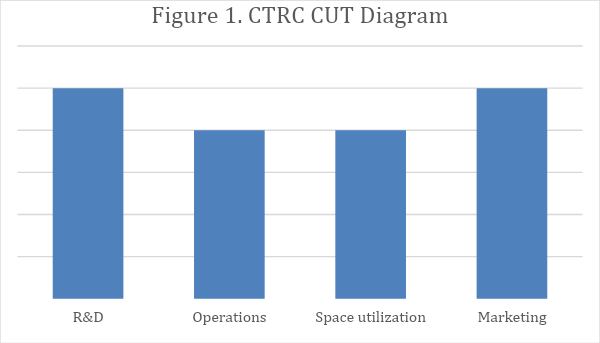The system and subsystem constraint is linked to the coronavirus-related restrictive measures, where social distancing and accommodation limitations severely lower the number of patients taken. The system possesses both external and internal constraints, where the market one is caused by an artificial reduction in maximum demand. In other words, the center cannot accept more than a specific number of patients, which means that despite high levels of need, the maximum value is lowered. The CDC and governmental regulations alter the market forces for CTRC to be unable to use its capacity. In the case of internal resources, the most evident hindrance is space and infrastructure to assess more people and abide by the CDC regulations.
However, the identified bottlenecks can be exploited in order to introduce some major improvements. It is stated that one can integrate gating mechanisms, such as strategic gating, in order to use the bottlenecks (Pass & Ronen, 2004). It is a deliberate action, where the system or subsystem focuses on the essential products or services through prioritization (Coman & Ronen, 2007). In other words, permanent bottlenecks, such as social distancing, cannot be avoided, but the organization’s approach can be altered to increase the general output. Therefore, it is the presence of a permanent bottleneck is the key reason for a hindered market constraint. CTRC’s CUT diagram can be seen in Figure 1, and one might notice that the subsystem is able to increase the load for its operations and space utilization. The main reason is that social distancing limits the number of patients accepted and accommodated, but spreading the points of visit and wait can allow more people to be within the CTRC. In addition, operations can also be improved by making each patient’s in-office time lower. Therefore, a person entering the center will be out in a shorter period of time.

The current measures of performance for CTRC are quality of research and the number of conjunctive cooperation. However, these metrics need to change to efficiency and time with the preservation of safety requirements. Therefore, the variables for comparison before and after the quality improvement project should focus on the time and efficiency of the operations. One should be aware that there are six performance measures, which need to be equitable, efficient, timely, patient-centered, effective, and safe (Institute of Medicine, 2001). At the moment, safety is the most vital metric, but it is not useful in determining whether the quality improvement project was successful. It can be established as a permanent condition, which is solidified by market forces through regulations. In addition, the majority of services of CTRC are equitable and effective, which is supported by the fact that many pharmaceutical companies are relying on the department. One can also argue that social distancing inevitably makes or at least preserves the measure of patient-centeredness because the lowered quantity increases quality.
Therefore, it is important to understand that the only two measures, which are critical, are time and efficiency. Efficiency is mostly referred to as space and resource utilization in order to increase the overall maximum capacity of patient acceptance. Social distancing requires more space and spread of point of the visit, which means that all medical personnel can be put at a max distance to allow each to have a patient without violating the regulations. The timing is also relevant because by reducing patient wait and in-office time, the number of patients seen can be increased.
References
Coman, A., & Ronen, B. (2007). Managing strategic and tactical constraints in the hi-tech industry. International Journal of Production Research, 45(4), 779-788.
Institute of Medicine. (2001). Crossing the quality chasm: A new health system for the 21st century. National Academies Press.
Pass, S., & Ronen, B. (2004). Management under market constraint in the hi-tech industry. Current Issues in Technology Management, 8(2), 1-8.